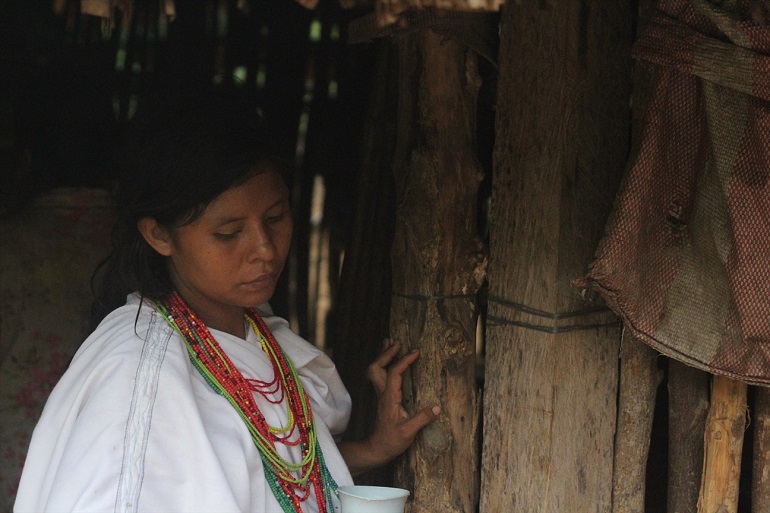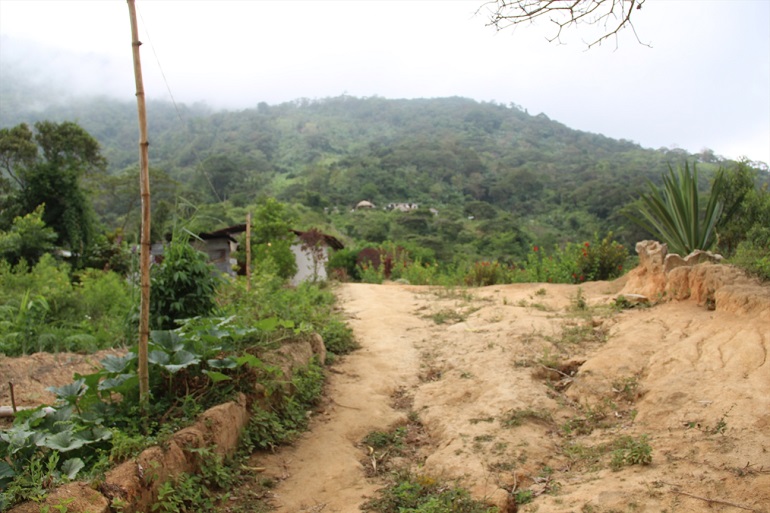
If Christian women in Colombia could decide on a hashtag, it could be ‘OfCourseMeToo’: many of them also experience sexual violence, facing extra vulnerability because of their religion as well as their gender.
Soraya*,15, and her family belong to one of the four tribes that form the indigenous community of approximate 30,000 people in the Sierra Nevada de Santa Marta, an isolated mountainous region in northern Colombia.
Here teenage girls as young as 14 are forced to marry men who maintain their indigenous beliefs, to make the girls forget about their Christian religion, according to the Christian charity Open Doors International.
The area where Soraya lives forms the spiritual and political centre of the traditional Arhuaca culture that sees itself as responsible for maintaining ‘the balance of the universe’. The tribe’s indigenous beliefs and traditions involve rituals and witchcraft and every member is expected to join in.
About nine months ago, Soraya and another girl, Hernán*, 14, were summoned to a hearing by indigenous leaders, where the girls were asked to distance themselves publicly from their Christian faith.
It was meant to give them an opportunity to be accepted back into the community without further threats and punishment in the form of detention, torture or – in the case of young girls like Soraya and Hernán – being forced to marry an indigenous man who still practised the tribe’s beliefs.
Despite this the children and their parents refused, and left the indigenous community to find safety in a shelter. While Soraya was able to escape to a safe house with her family, most indigenous girls cannot.
Deepest fear
But, following the recent closure of the shelter, Soraya and her family had to return to their community where they will be put on trial and could then face imprisonment. As they started the slow journey home, a walk of a few days through the dense, green mountains, Soraya’s mother, Elvia*, said she feared for herself and her daughter. Her “Ika” (deepest fear) is that “we do not have freedom; the enemy attacks us”, she told a local worker of Open Doors.
Open Doors says it can be difficult to challenge the discrimination that indigenous women experience on the basis of their gender and minority status, partly because it is supported by a legal framework. The right to indigenous autonomy is recognised and protected by the 1991 Constitution, and the ILO Indigenous and Tribal Peoples Convention (1991) was ratified and implemented in Colombian law.
Indigenous peoples in Colombia, approximately 1.5 million people or just over 3% of the population, are seen by law as an “extended family” that has the right to manage their own affairs – as long as they are not in conflict with the country’s constitution. However, in practice this causes tensions over, especially, land and resources, with former fighters of the FARC rebel group also claiming their rights to settle on land.
Victims
In 2016 FARC and the Colombian government signed a peace agreement that officially ended more than five decades of civil war.
During that time the rebel group murdered pastors, destroyed churches, extorted congregations, kidnapped missionaries and church leaders, and forcibly conscripted church youths into its ranks to serve as child soldiers.
As well as the bullets and machetes, sexual violence was another popular weapon used to intimidate and destroy the population.

According to Amnesty International’s 2017 annual report, civilians reported 22,195 cases of sexual violence during the armed conflict. But with more than 350,000 “victims of threats”, as well as hundreds of thousands of victims of other crimes, the actual number could be much higher, as sexual violence often goes hand in hand with other atrocities, experts say.
Also, according to Open Doors, victims are often afraid to report sexual abuse because “it is something so common and frequent that it is not considered a crime”.
“Like death or illness, sexual abuse has become a type of suffering that all women must face sooner or later,” according to Open Doors.
Guerrilla groups
Not included in the numbers is the abuse that takes place within the guerrilla groups themselves, which is used to punish and intimidate. Luz*, a former guerrilla fighter who decided to leave after converting to Christianity, was sexually abused by her comrades when they found out.
“They rob you of your family. They make you live a life that you do not choose,” said Sara*, another former guerrilla fighter. “They exchange a doll for a rifle, a playground for a battlefield and they sexually violate you. These violations damage your soul. Not a single day goes by that you do not remember those moments.”
“Sexual abuse doesn’t only have sexual implications,” says Open Doors’ spokesperson who supports victims. “It is a violent means of nullifying the will of a person, of crushing the individual and robbing them of their identity.”
Amnesty says that since 2016 “violence against women, particularly sexual violence, [has] persisted” as the conflict has intensified in certain areas.
A female church leader told World Watch Monitor in 2016: “The end of the FARC is not the beginning of peace; it is only one actor in this war. The persecution against the Church has grown through criminal gangs, indigenous leaders and other guerrilla groups.”
Rural communities
Christians in rural communities are also often on the receiving end of violence from guerrillas, paramilitary groups and government forces. Diego*, a pastor, lived with his wife Ledy* and two small children in southeast Colombia, where guerrilla fighters were still active.
Following the conversion to the Christian faith of some young insurgents, local guerrillas threatened the pastor, telling him to leave the area. When he refused, fighters came to destroy his house and crops, as well as to sexually abuse his wife and both children.
*Real names withheld for security reasons